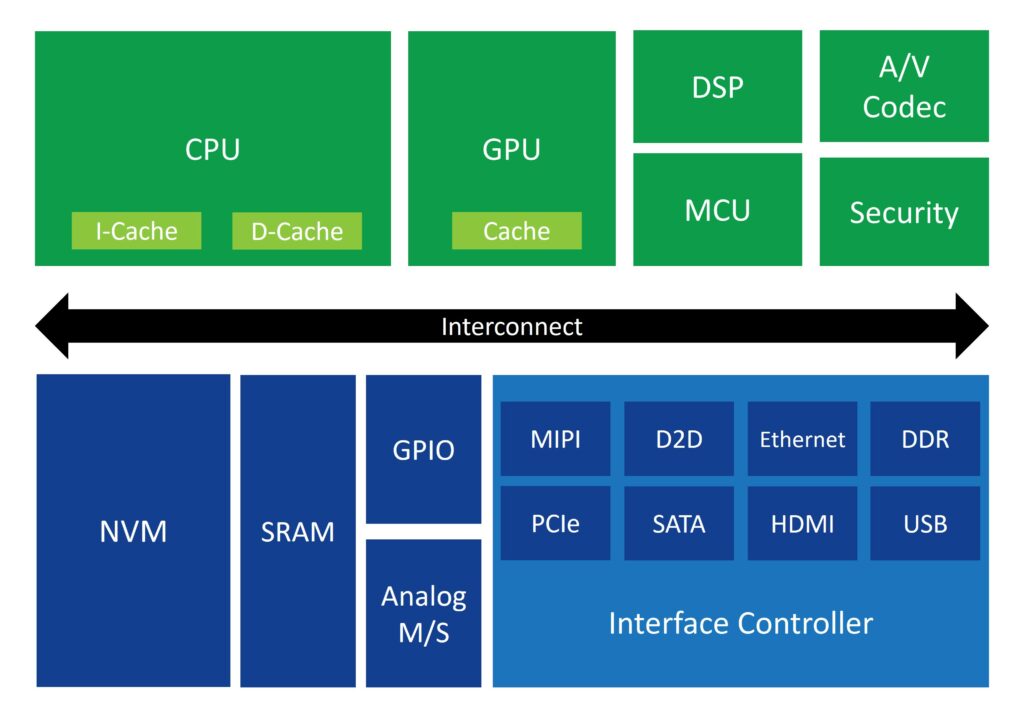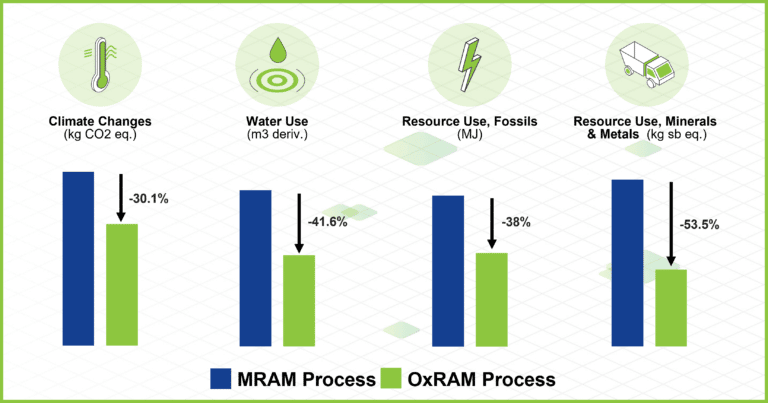April 26th is World IP Day, celebrated annually to highlight the role that intellectual property (IP) rights play in encouraging innovation and creativity. According to the World Intellectual Property Organization (WIPO) website, “IP is central to addressing the global challenges we face. IP is a powerful catalyst for growth and development and, as such, has a key role to play in improving livelihoods, and safeguarding our planet.”
On World IP Day, I thought I would take the opportunity to talk about what ‘IP’ means, focusing in particular on what semiconductor IP is, and why it matters.
What is IP?
According to the Merriam Webster Dictionary, ‘Intellectual Property’ refers to “property (such as a concept, idea, invention, or work) that derives from the effort of the mind or intellect.” It is also “a right or registration (such as a patent, trademark, trade secret, or copyright) relating to or protecting this property.”
‘Semiconductor IP’ fits this definition, but it goes beyond it. Within the world of semiconductors, ‘IP’ refers to a licensed product that enables System-on-Chip (SoC) designers to create complex semiconductors more quickly by integrating various pre-verified functional building blocks. With the incredible size and complexity of a modern SoC (often benchmarked by the number of transistors per die), it just doesn’t make practical sense to create each piece of functionality from scratch. IP is a must.
Above: With the ever-increasing complexity of modern SoCs, it’s impractical to build everything from scratch.
Today’s SoCs can contain hundreds of IP blocks. These include CPUs, GPUs, peripherals, interconnect, memories, controllers, and various other pieces of a system.
Above: An example of different IP blocks in an SoC
Semiconductor IP can be created by a company internally or it can be licensed from a third-party IP vendor. Companies often develop IP internally when that IP represents their ‘secret sauce.’ In that case, the company can then decide whether to use it only for their own product designs, or to broadly license it to other vendors looking to include it in their products, in a licensing model. When companies license third party IP, that IP usually represents either some basic standard functionality, such as Ethernet or USB controllers, or a proprietary design that represents specialized or highly differentiating functionality. In any case, customers don’t need to reinvent the wheel and design something that is already available. If they need a CPU, DSP, GPU or similar, their SoC development would take significantly more time if they redesigned such “standard” components from scratch.
Some IP are ‘soft’ IP blocks, which are highly flexible. They are delivered as hardware code (also known as RTL) and can be synthesized by the customer to target any library or process node. Processors are usually delivered in this form so the designer can target specific performance, power and area points to meet their target application.
At the other end are ‘hard’ IP blocks or hard macros – fixed mask layouts that can be dropped directly into the chip design. These usually include analog design circuits which must be carefully tuned to a given foundry process, to best utilize its advantages. The benefit of this type of IP is that while it isn’t synthesizable by the customer, it’s a lot less work for them, and the design is extremely optimized for the specific foundry process. The result is an ideal balance of parameters for a customer’s design as manufactured in a specific process node.
‘Process” IP is another type of semiconductor IP. It describes the steps, tools and materials to be used in the manufacturing process of a semiconductor device, called die. Such IP takes years to master and guarantee performance, but once it is qualified, it normally remains in use for very long periods of time. The end result of such a process IP development are key differentiation capabilities that are passed on to the end customer. Process IP has an effect on a broad part of the semiconductor IP ecosystem and is therefore very valuable.
Hard IP and process IP are extremely complex. Developing a new process takes many years. All three ReRAM (or RRAM) technologies in the industry have been under development for more than a decade, and at Weebit we also rely on research done at CEA-Leti since the beginning of the century. This is the norm for these types of IP blocks, not an exception. You can’t expect customers to make such investments, so IP developers like Weebit take on the effort, allowing customers to license the IP.
Weebit delivers various types of IPs: Our process IP tells the fabs how to manufacture the memory array, and usually requires close collaboration for a successful process transfer. Weebit has a team of PhDs in chemistry and physics who constantly research and improve our process IP. And separately, our design IP blocks can be dropped into the customer design upon tape-out, eliminating any risk or effort for our customers.
Above: Weebit IP deliverables
To successfully create and deliver these IP blocks, it’s critical to have the in-house expertise that can be used to optimize the design, including analog and digital design, and to have these engineers work closely with the process and device team. This unique combination of expertise is one of Weebit’s strengths. You can learn more about it in the below video.
Patented Technologies
It’s critical that we protect our ReRAM IP, so we regularly file patent applications and secure new patents. Developing disruptive technology that can be patented is not only a result of great material science engineering, but also reflects an understanding and ability to control the physics of the device. This includes sophisticated process flow techniques as well as smart algorithms (see more in the article, ReRAM Gets a Boost from Smart Algorithms) and innovative circuit designs. Because of our cross-discipline expertise, we can create patentable technology innovations.
Some examples of Weebit patents include:
- Smart algorithms that increase the reliability and yield of ReRAM memory cells
- An efficient method to implement robust multi-level storage in ReRAM, significantly improving cost-competitiveness
- Unique chip circuitries that optimize the access time and power associated with programming the memory module, while enhancing bit performance
These are just a few examples that highlight the innovations that Weebit is providing within the ReRAM ecosystem. Such innovations will create even more competitive advantage for our ReRAM, but more importantly: it will benefit our customers using Weebit ReRAM.
The Value of IP
With the ever-increasing complexity of today’s SoCs, there is no question that third party IP blocks will continue to play a critical role in helping companies deliver cutting-edge products within ever-tighter time-to-market constraints. At Weebit, we deliver unique and highly optimized IP solutions to foundries, IDMs and product companies. Our patented technologies and cross-discipline expertise – covering analog design, digital design, device and process – means we can do this to customers’ exacting specifications, providing difficult-to-copy functionality. And we do this to industry standards, qualifying our IP to assure it will work as advertised.
This is an exciting time to be in the semiconductor industry, delivering IP solutions that enable companies to create highly differentiated solutions for a new generation of products.













